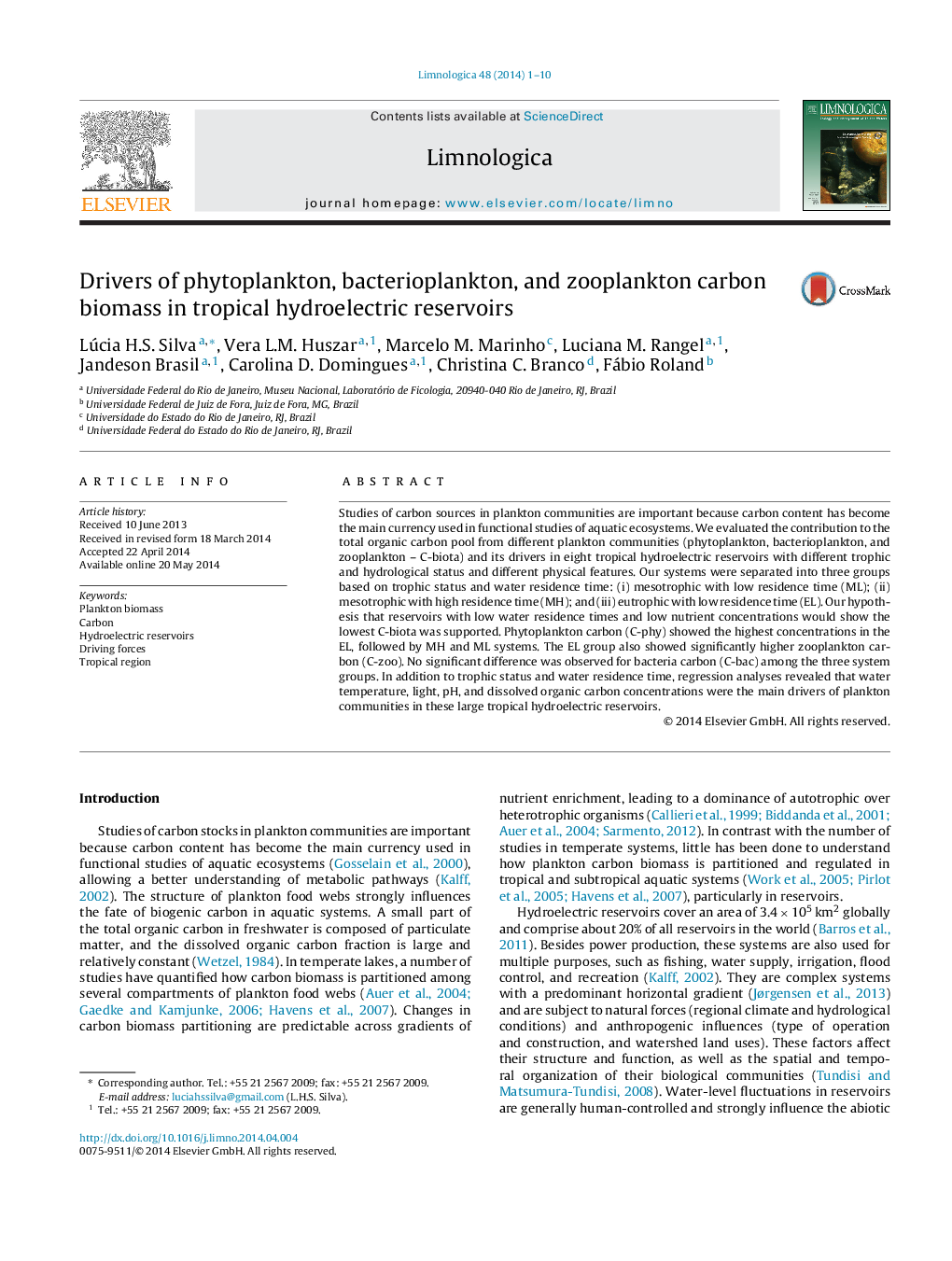| Article ID | Journal | Published Year | Pages | File Type |
|---|---|---|---|---|
| 4400372 | Limnologica - Ecology and Management of Inland Waters | 2014 | 10 Pages |
Studies of carbon sources in plankton communities are important because carbon content has become the main currency used in functional studies of aquatic ecosystems. We evaluated the contribution to the total organic carbon pool from different plankton communities (phytoplankton, bacterioplankton, and zooplankton – C-biota) and its drivers in eight tropical hydroelectric reservoirs with different trophic and hydrological status and different physical features. Our systems were separated into three groups based on trophic status and water residence time: (i) mesotrophic with low residence time (ML); (ii) mesotrophic with high residence time (MH); and (iii) eutrophic with low residence time (EL). Our hypothesis that reservoirs with low water residence times and low nutrient concentrations would show the lowest C-biota was supported. Phytoplankton carbon (C-phy) showed the highest concentrations in the EL, followed by MH and ML systems. The EL group also showed significantly higher zooplankton carbon (C-zoo). No significant difference was observed for bacteria carbon (C-bac) among the three system groups. In addition to trophic status and water residence time, regression analyses revealed that water temperature, light, pH, and dissolved organic carbon concentrations were the main drivers of plankton communities in these large tropical hydroelectric reservoirs.
